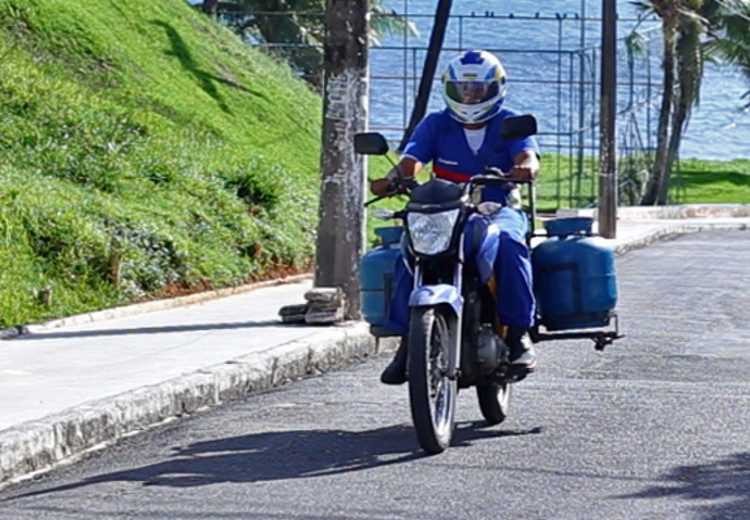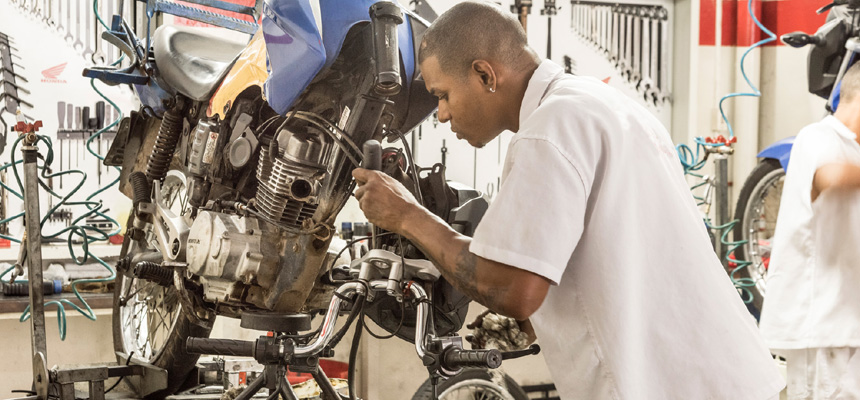Small Engines
New JASO T903 motorcycle specification
04 July 2023
08 November 2017
Real life testing in Brazil demonstrates advantages of motorcycle lubricant additives

Recognising the importance of testing engine oils in demanding, real world conditions, Infineum has recently completed an extensive field trial to demonstrate the performance of its latest motorcycle additive technology. Watch the outcome on video and read about the value these new oils can deliver.
Field trial confirms superior performance Infineum International Limited
With over 80 years of experience in the formulation, manufacturing, and marketing of lubricant additives, Infineum recognises the value of testing engine oils in demanding, real world conditions. It’s for those reasons, and more, that our additives are in over 200 million motorcycles worldwide.
Recently we completed an extensive field test to demonstrate the performance of our Infineum Premium Motorcycle Oil Additive Technology - Infineum S1990.
But this was no ordinary field trial... but one of the toughest imaginable …15 motorcycles running over 100,000 kilometers carrying very heavy loads up and down the hills of Salvador, Brazil.
It was here that we wanted to clearly demonstrate the true performance of Infineum S1990, 4 stroke motorcycle additive technology, in a 5W-30 grade against 10W-30 competitive formulations including an OEM oil and a leading lubricant marketer’s oil. A 20W-50 oil was used as a reference for the test.
The test bikes were the Honda CG 150 Fan, one of the most popular motorcycles in Brazil, equipped with Flex fuel engines running with Brazilian E27 gasoline containing 27% ethanol.
Before the trial, all the engines were inspected and then cleaned and flushed to avoid contamination to ensure they started the trial in exactly the same condition. The bikes were then filled with one of the five test oils – each oil being tested in three different bikes.
Some Brazilian cities have a network of piped gas, but here in Salvador the majority of the distribution is carried out through the use of bottled gas canisters, containing liquefied petroleum gas which are mainly transported by motorcycles.
So during the trial each motorcycle carried three gas cylinders, each weighing 28 kgs, plus a metal frame to carry the load and the test rider – it was as if the bikes were carrying the weight of two or three people.
The combination of the hilly terrain, stop and go operation, heavy loads and high ambient temperatures put extreme demands on the motorcycle oils being tested. Those factors can lead to degradation of the motorcycle engines, due to wear and deposit formation.
During each oil change, samples were collected for laboratory analysis. The riders were then interviewed to get their impressions of how the bikes performed during the trial. At the end of the test, the engines were torn down and all the parts were inspected. Oil samples were also collected for final analysis.
Luiz: “My name is Luiz Fernando. I am a Mechanical Engineer. My role in this project was to guide the preparation of the engines at the start of the test and to inspect the same engines at the end of the test and evaluate wear and deposit formation resulting from the oils being tested. This analysis was made visually by evaluating the deposits and comparing the formation of varnish and sludge with the ASTM standards.”
Luiz: “In general, I observed very little formation of deposits and very slight wear. The cylinders, for example, had only superficial scratching from the sliding of the rings and, for the most part, the honing marks were preserved.”
While the Infineum S1990 was formulated in a low viscosity 5W-30 oil, it provided wear protection equivalent to that of the 10W-30 candidate oils.”
The unique chemistry of Infineum S1990 demonstrated superior and unique performance throughout the entire service life of the oil with features above and beyond the minimum requirements of the JASO specification, including:
To learn more, please contact your Infineum representative.
Infineum has recently completed a 100,000 kilometre field trial, testing five lubricant formulations in 15 motorcycles. The trial was run up and down the hills of Salvador, Brazil using heavily laden motorbikes. The key objective was to assess if, under these severe conditions, lubricants formulated with different technologies could continue to deliver sufficient engine protection.
Unlike many Brazilian cities, Salvador has no network of piped gas. Here the majority of gas distribution is via bottled liquefied petroleum gas canisters, which are mainly transported using motorcycles. This provided the opportunity for an extremely challenging test scenario for the Infineum field trial.
The test bikes were all model year 2013 to 2015 Honda CG 150 Fan motorbikes, one of the most popular models in Brazil. During the test, the one-cylinder flex engines were run exclusively on Brazilian E27 gasoline (gasoline containing 27% ethanol). The motorcycles carried the test rider, three gas cylinders, each weighing 28 kg, plus a metal frame to carry the load. The total weight was equivalent to the bike carrying three people for the entire test.
The combination of the hilly terrain in Salvador, stop and go operation, heavy loads and high ambient temperatures put extreme demands on the motorcycle oils being tested.
Five oils were used for the extensive field trial. The Infineum SAE 5W-30 grade test oil was formulated using four-stroke motorcycle additive technology. This was run against SAE 10W-30 competitive formulations including an OEM oil and a leading lubricant marketer’s oil. An SAE 20W-50 oil was used as a reference for the test.
Before the trial, all of the engines were inspected and then cleaned and flushed to avoid contamination and to ensure they started the trial in the same condition. The bikes were then filled with one of the five test oils – each oil being tested in three different bikes.
Throughout the six-month test, oil samples were collected regularly for laboratory analysis, creating an extensive database to enable an in-depth study. At the end of the test, a full inspection was undertaken, which involved completely dismantling the bikes so that the components could be evaluated.
 At the end of the field trial the bikes were dismantled and the components evaluated
At the end of the field trial the bikes were dismantled and the components evaluated
On inspection of the engine parts, only very light varnish deposits were observed on the piston lands, skirt and undercrown for the bikes that used the Infineum test oil. In comparison, for the bikes running on the commercial oils, medium deposits were observed on the piston lands and skirt and heavy deposits on the piston undercrown.
In addition, only very slight wear was noted. As Luiz Fernando, the Mechanical Engineer who inspected the engines at the end of the test explains, “The cylinders had only superficial scratching from the sliding of the rings and, for the most part, the honing marks were preserved.” This observation was supported by the used oil analysis, which showed less iron content in the Infineum test oil.
Although the Infineum test oil was formulated to a low viscosity SAE 5W-30 grade it provided wear protection comparable with the SAE 10W-30 commercially available oils.
The motorcyclists who carried out the test commented that the bikes running on the SAE 5W-30 test oil consumed less fuel during the test.
The test oil, formulated with Infineum motorcycle additive technology, not only demonstrated superior performance throughout the test, but also delivered protection beyond the minimum requirements of the JASO T 903 specification, including:
The results of this real life field trial, which was run under extremely harsh conditions, demonstrate that an SAE 5W-30 motorcycle lubricant formulated with advanced additive technology from Infineum can deliver equivalent wear protection to commercially available SAE 10W-30 oils.
Sign up to receive monthly updates via email